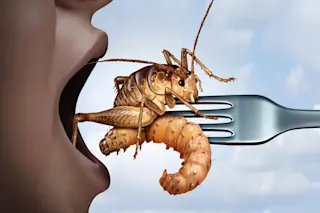If your everyday ham and bacon have become boring, look no further than the Hungarian Mangalica pig. It's a rare breed; in fact, 20 years ago, there were fewer than 200 of them left worldwide. But the Hungarian Mangalica has since been bred for food, and in the process, the population has swelled to 20,000 in Hungary and Spain. The curly-haired oinker needs space to roam and grows very slowly, making it incompatible with modern pig farms. Luckily, other pig-ophiles stepped in to keep the breed afloat. Scientific American reports:
The resurrection of the Mangalica has been the mission of Juan Vicente Olmos, the head of Spain's Monte Nevado ham company, and geneticist Peter Tóth, who tracked and purchased the last pigs from farms scattered throughout Hungary. After less than two decades of intense breeding, the Mangalica population has now increased one-hundred-fold, with 20,000 pigs living in Spain and Hungary. Of course, a breed (like the Mangalica) is not a species, so it couldn't technically go extinct. Still, the salvation of the pig and its unique genes remains a victory. The Mangalica may not be suited to modern commercial livestock production, but it does contain genes that don't exist elsewhere. Some of those genes make it more suitable to cold, mountainous regions. Who knows when and where those rare genes could be of use?
Keep in mind that rare pork comes at a price: At nearly $55 per pound, an eight-to-10 pound ham will set you back $490. Related Content: Discoblog: Charge by the Hour? Scottish Volunteers Build Mating Motel for Frogs Discoblog: Empty Nesters: Pigeons on the Pill See Their Egg-Laying Thwarted Discoblog: Afghanistan’s Lone Pig Quarantined for Swine Flu
Image: flickr / Ken Wilcox.










